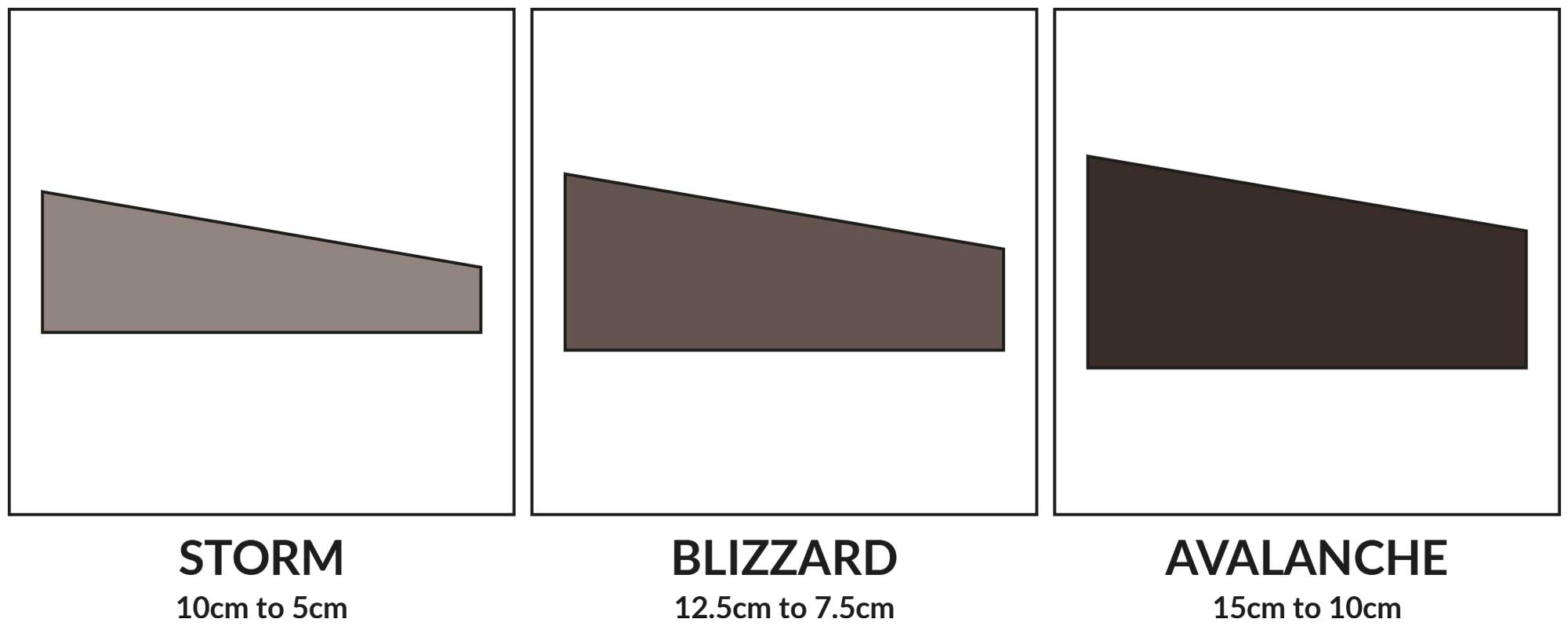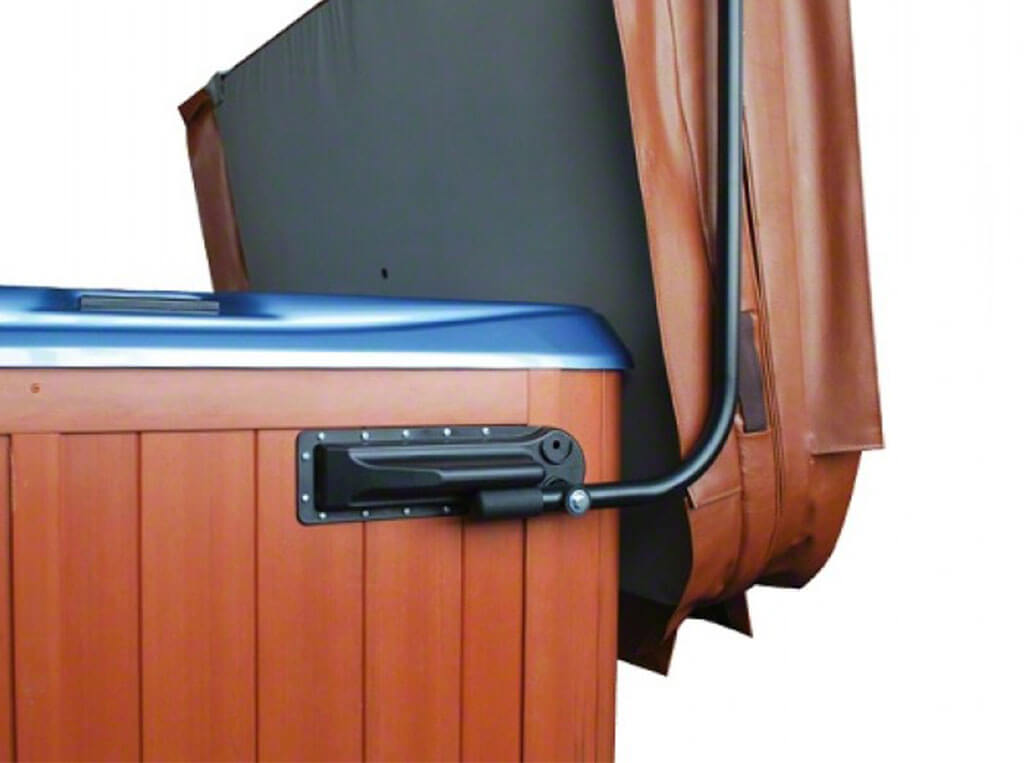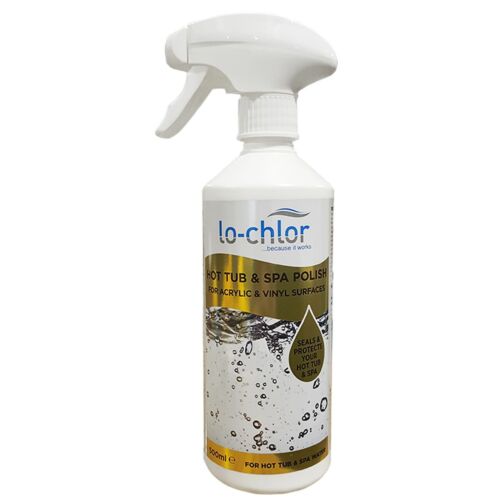Why is my hot tub cover important?
- Energy efficiency: A hot tub cover helps to maintain the temperature of the water and reduces heat loss, which can save you money on energy costs. When the cover is in place, it helps to retain the heat generated by the hot tub’s heater, which means the heater doesn’t need to work as hard to maintain the water temperature.
- Safety: A hot tub cover provides a barrier to keep children and pets from accidentally falling into the hot tub when it’s not in use. It can also prevent debris, leaves, and other objects from falling into the water, which can help keep the water clean and reduce the need for frequent cleaning.
- Protection: A hot tub cover can protect the hot tub from weather-related damage such as snow, ice, or excessive sunlight exposure. It can also help prevent damage to the hot tub itself, such as scratches, dents, or other types of wear and tear.
- Maintenance: A hot tub cover can help reduce the amount of time and effort needed to maintain the hot tub. By keeping debris out of the water, the cover can help reduce the frequency of water changes and chemical treatments, which can save time and money.
Overall, having a hot tub cover is an essential part of owning a hot tub, as it provides several benefits that can help keep the hot tub clean, safe, and energy efficient.
How do I look after my hot tub cover?
The hot tub cover is an important component of your hot tub, as it helps to keep the water clean and reduce heat loss, which can save you money on energy costs. To prolong the life of your hot tub cover, here are some tips:
- Maintain proper spa water chemistry: We cannot stress this enough. As your spa water chemistry is more balanced, the vapours coming off the tub are less corrosive. Making the vapours less corrosive leads to the protective layers of the cover to degrade more slowly, thus prolonging the life of your cover. Failing to maintain proper water chemistry may void your warranty.
- Keep it clean: Regularly clean the cover with watered down hot tub surface cleaner, or mild soap and water to remove any dirt, debris, or stains. Avoid using silicone-based cleaners, treatments, bath or kitchen cleaning products, as they can damage the cover.
- Protect it from the elements: The cover should be protected from direct sunlight, rain, and snow. Exposure to UV rays can cause the cover to fade and deteriorate over time. Use a soft brush or broom to push any excess water or snow off the cover.
- Use a cover protector: Applying a protector polish specially designed for hot tub covers can help protect the cover from UV damage and extend its life.
- Consider a cover lifter: Do not scrape or drag the hot tub cover. Do not pull or lift the cover by the skirt, hinges, or seals, please use the handles provided. Do not lift cover without unfastening the locking straps. Consider installing a cover lifter to make it easy to remove and keep it off the ground the entire time you are using your hot tub, preventing it from further damage.
- Avoid placing heavy objects on it: Do not place heavy objects on the cover, as it can cause it to sag or even crack. Encourage everyone using the hot tub to avoid sitting, standing, or leaning on the cover, and never allow children to play on the cover.
- Prevent heat loss: Attach all locking hold down straps when installing and fasten when not in use to prevent heat loss.
- Replace it when necessary: Hot tub covers have a limited lifespan and will eventually need to be replaced. If you notice that your cover is becoming worn, damaged or is no longer fitting properly, it’s time to consider getting a replacement.
How long should a hot tub cover last?
The lifespan of a hot tub cover can vary depending on several factors, including the quality of the cover, the climate it is exposed to, and how well it is maintained.
Over time, hot tub covers can become heavy and waterlogged, which can make them less effective at keeping heat in and debris out, reducing its efficiency by up to 40%. They can also become damaged by exposure to the sun, extreme temperatures, or improper handling. Bacteria can harbour in the cover if it is waterlogged meaning more chemicals are required to maintain healthy water. Regularly cleaning and conditioning the cover, and protecting it from harsh weather conditions, can help prolong its lifespan.
It’s important to regularly inspect the cover for any signs of damage, wear, or water absorption. If the cover is becoming heavy or sagging, it may be time to replace it. A worn or damaged cover can reduce the efficiency of your hot tub, lead to higher energy costs, and potentially even cause damage to the hot tub itself.
Is having a thicker hot tub cover better for insulation?
Yes, a thicker hot tub cover can provide better insulation for your hot tub. The insulation provided by a hot tub cover is one of the key factors in maintaining the water temperature and reducing energy costs.
Storm – In picture shown: Level 1 tapered insulation for a hot tub cover is a standard insulation system that provides a basic level of protection for the hot tub. Although considered the lowest grade thickness level, the quality is never compromised. Level 1 is still designed to help the cover to slope and shed water, preventing it from accumulating on the surface and causing damage.
Blizzard – In picture shown: Level 2 tapered insulation for a hot tub cover refers to a type of insulation system that is designed to provide efficient heat retention for a hot tub while also accommodating the shape of the tub. Tapered insulation means that the cover is thicker on one end than the other, which allows for water runoff and prevents pooling.
Level 2 tapered insulation is generally more effective at retaining heat than a flat cover with minimal insulation and will provide a higher level of thermal protection for the hot tub water and reduce the cost of maintaining the water temperature.
Avalanche – In picture shown: Level 3 tapered insulation for a hot tub cover is a high-end insulation system that is designed to provide maximum energy efficiency and heat retention for a hot tub. A Level 3 insulation system is similar to a Level 2 system in that it includes a foam core that is covered with a durable and water-resistant material, such as vinyl or PVC. However, the foam core used in a Level 3 system is typically denser and has a higher insulation value than the foam used in a Level 2 system. Overall, Level 3 insulation is a premium option that offers the highest level of insulation and energy efficiency for hot tubs. While it may come at a higher cost, the long-term savings on energy costs and maintenance make it a worthwhile investment for many hot tub owners.

Why do hot tub covers get waterlogged?
Hot tub covers can get waterlogged over time due to several reasons, including:
- Steam and condensation: When a hot tub is in use, steam and condensation can accumulate on the underside of the cover. Over time, this moisture can seep into the cover and cause it to become waterlogged.
- Age and wear: As a hot tub cover ages, the materials they are made from can break down and become less effective at repelling water. If then the cover becomes exposed to the elements such as rain or snow, water can seep into the cover and become trapped inside. As a result, causing the cover to become waterlogged.
- Chemical damage: The chemicals used to treat the hot tub water can cause damage to the cover, especially if the cover is not properly maintained. Over time, the chemicals can break down the cover’s materials, making it more susceptible to water damage.
It’s important to regularly inspect and maintain your hot tub cover to prevent it from becoming waterlogged. If you notice that your cover is becoming heavy, sagging, or is no longer fitting properly, it may be time to consider getting a replacement. A waterlogged cover can reduce the efficiency of your hot tub, lead to higher energy costs, and potentially even cause damage to the hot tub itself.
How can I lift my cover off the hot tub?
- Use a cover lifter: A cover lifter is a mechanical device that attaches to the hot tub and helps lift the cover off and on. This can make the process of removing and replacing the cover much easier and can reduce the strain on your back.
- Get help: If you don’t have a cover lifter, ask a friend or family member to help you lift the cover off the hot tub. With two people, one person can lift each end of the cover, making it much easier to remove.
- Use a handle: Most hot tub covers have handles built into them. Use these handles to help you lift the cover off the hot tub. Be sure to lift with your legs and not your back to avoid injury.
- Use a step stool: If you’re having trouble reaching the cover, use a step stool to give you a little extra height. This can make it easier to reach the cover and lift it off the hot tub.
Remember, it’s important to lift the hot tub cover off the hot tub carefully and slowly to avoid injury or damage to the cover. If you’re having difficulty lifting the cover, consider investing in a cover lifter or asking for assistance.

Inner Core Maintenance
- Be sure to take the cover completely off the tub when shocking with chemicals and leave it off for a period of 30 minutes or until the chemical level is back to normal. Very important to take cover off, not just flip one side open.
- Spray or wipe off the bottom side of your cover approximately once a month to get the excess chemical residue off the plastic barrier. These excess chemicals are what cause the plastic to dry out and crack.
- Approximately every 6 months, take the inserts out and flip them over so that the opposite side of the insert is over the water.
WEATHERSHIELD – EXTERNAL SKIN
Exclusive Weathershield Fabric. 3 x Stronger – 50% Lighter – 100% Better
Polyester in general is a synthetic fabric that begins as a polymer melt (liquid form). In the solution-dyeing process, the colour is added during the liquid stage, prior to being cooled and spun into synthetic fibres. Since the colouring goes through and through and isn’t just applied to the surface of the material, the fabric retains its properties more than a stock-dyed fabric would when exposed to intense sunlight and air pollutants.

Warning: To Avoid Drowning Risk:
- DO NOT SIT / STAND or LAY on your hot tub cover. It WILL NOT support weight. Even resting your elbows on a cover can put a small dent in the foam
- KEEP CHILDREN AWAY – Kids love to play! DO NOT allow them to play under the cover! Children or objects CANNOT BE SEEN under cover. REMOVE COVER COMPLETELY before entry of bathers. Entrapment is POSSIBLE
- NON-SECURED or IMPROPERLY SECURED covers are a HAZARD. Remember to fasten and even look down your cover if you are concerned
- CHECK COVER FREQUENTLY for damage and / or premature deterioration
- FAILURE TO FOLLOW ALL INSTRUCTIONS may result in injury or drowning
PLEASE STAY SAFE!


